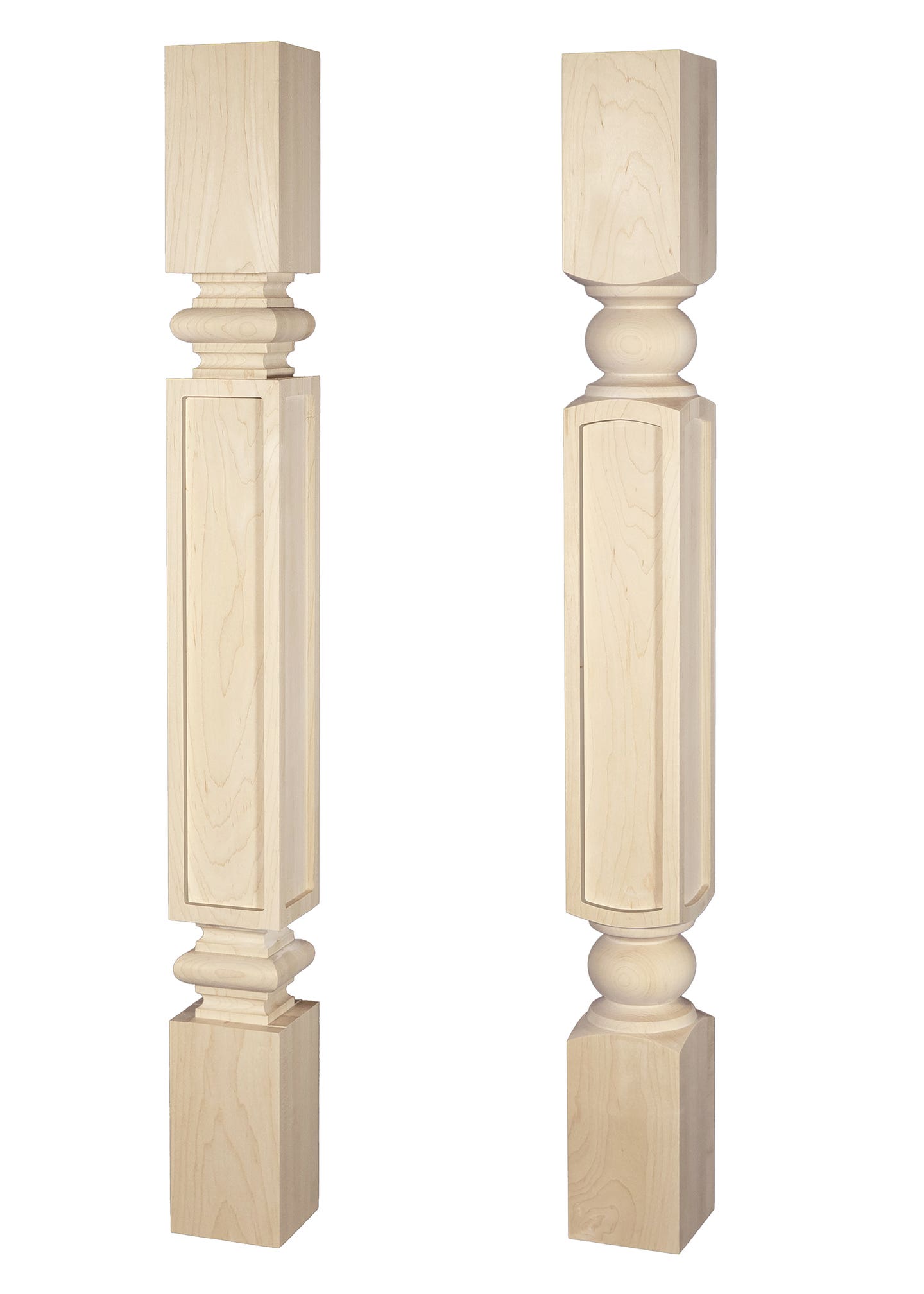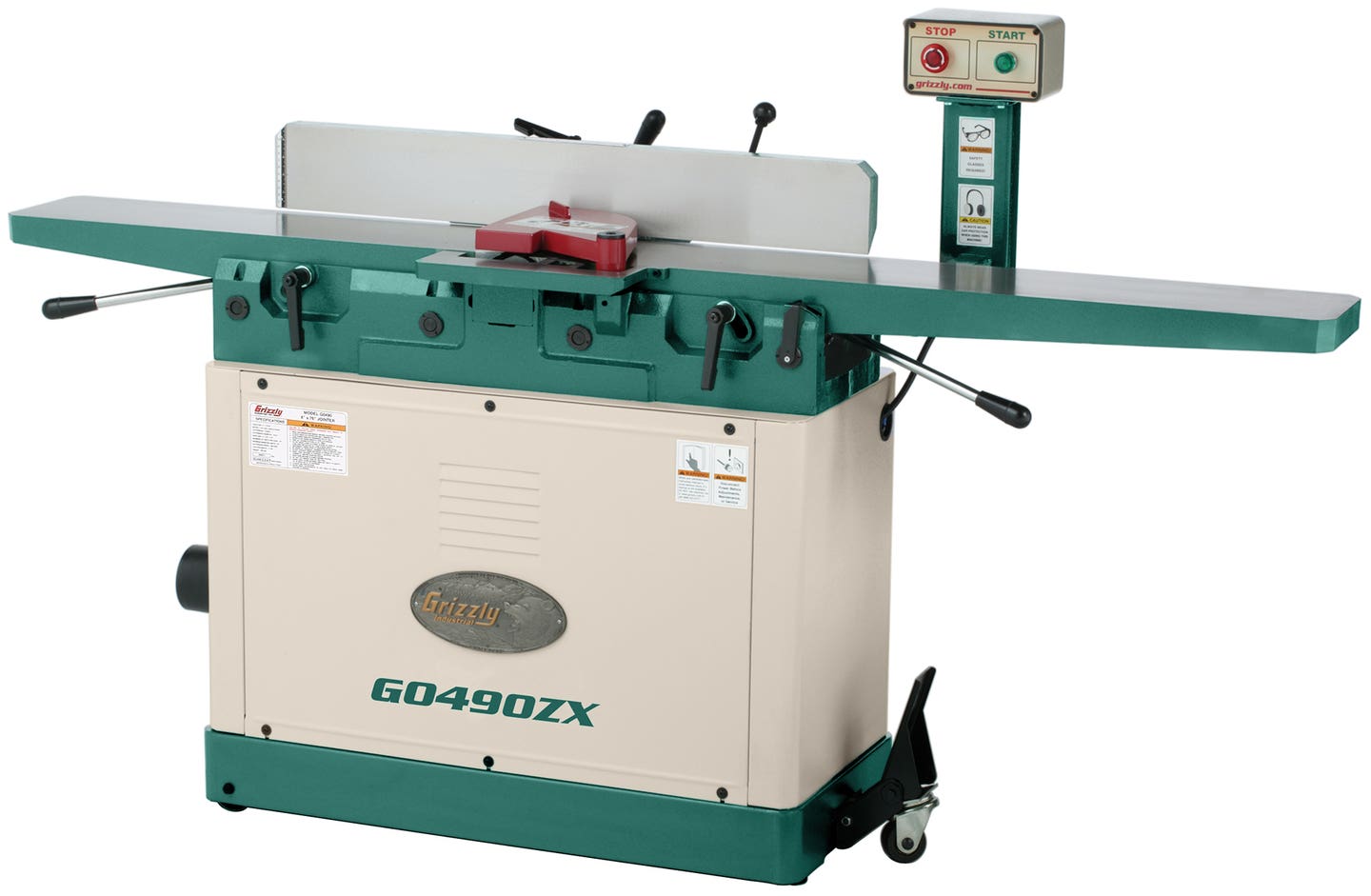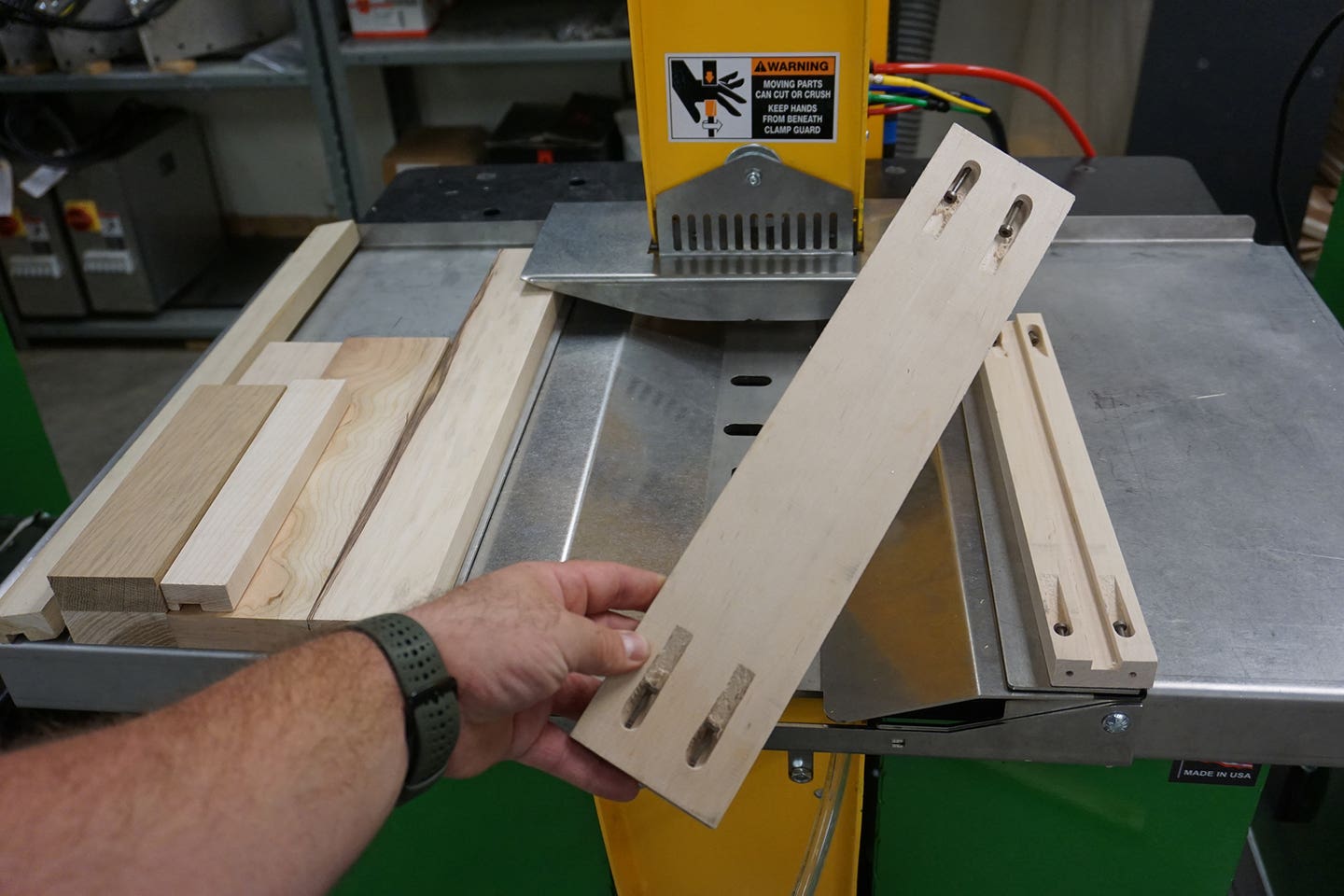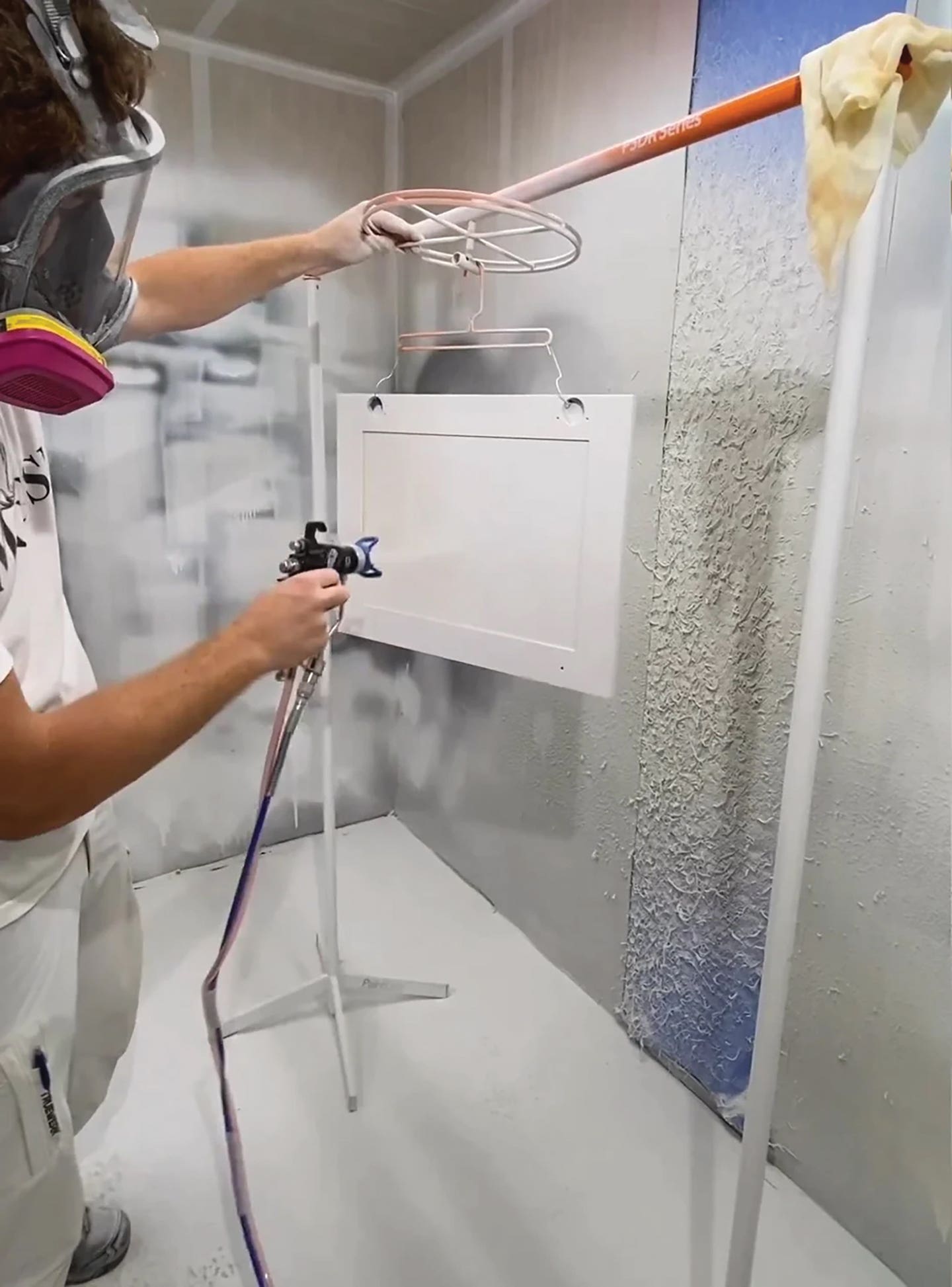On-site obstacles dont have to cost time and tools
Working on a remote site, the chief concern is usually portability. Whether installing trim, millwork or cabinetry, the tools have to be hauled there and back. But woodworkers often have…
Working on a remote site, the chief concern is usually portability. Whether installing trim, millwork or cabinetry, the tools have to be hauled there and back. But woodworkers often have to overcome other obstacles, too, including inadequate light, dust containment, minimizing noise or even just taking up as little physical space as possible. And there’s always a security issue with leaving tools on site. They tend to grow legs.
With those parameters in mind, here’s a look at some innovative tools that can make life a little easier — and safer — for trim carpenters and cabinet installers.
Light it up
Cabinet installations, especially in new construction, often take place before the kitchen’s permanent lighting fixtures are hooked up, so the woodworker might have to rely on worklights. That’s fine for an overall view, but working the fine details requires very focused illumination. Decent lighting can be the difference between a sloppy or perfect miter.
The emergence of LED lamps has provided some interesting solutions here and most of the major tool manufacturers have come up with lithium-ion battery-pack versions. But for something small, light and very inexpensive, how about a light that clips onto the brim of a standard baseball cap? There are many on the market and one version offered by Harbor Freight Tools (Item No. 65288, $4.99, at harborfreight.com) runs for about 10 hours on the included pair of replaceable lithium-ion batteries.
If you’d prefer not to buy batteries or wear a cap, there’s the Satellite rechargeable LED worklight from Stanley Tools (item SAT5S at stanleytools.com). It fits in a pocket, has a pivoting head, delivers 500 lumens through three folding lights and a fixed one, and runs for about 12 hours on a charge.
Or for more illumination in awkward spaces, check out the hands-free Flexit light from Thingamejigtools.com that can bend like a sheet of paper, wrap around tubes and pipes, push into tight corners or even magnetically fasten to metal objects. Batteries are included and there are three adjustable LED light functions (low, medium, high) that allow a woodworker to shape and direct just the right amount of light inside, say, a corner base. Another very strange and innovative lamp from the same website is the Light Mine, which is about the size of a baseball and contains several white and red LED lights. The white ones are worklights and have high and low settings, and the red ones can be used as a flashing beacon or night-vision light. Rare-earth magnets attach and aim the light and built-in posts act as tripods and quad-pods to position the light on non-magnetic surfaces.
Tool or toy?
Technology is entering the woodshop in myriad ways, one of the most interesting being virtual reality. Several CAD companies are working on allowing builders, installers and even clients to virtually tour completed kitchen installs before a single board has been planed. The difference between this and 3-D rendering is that it’s more lifelike, can integrate site photos and will be experienced on low-cost VR helmet and goggle viewers. This option will become much more widely available in the next year or two. A shop foreman will be able to walk through the entire job with the installer before the cabinets are even loaded on the truck and the installer will be able to make more comprehensive lists of everything that will be needed on-site and avoid some unnecessary trips back to the shop.
VR takes 3-D rendering to a new level and even Ikea is exploring the possibilities: last April, the company launched a pilot virtual-reality app, which is intended to solicit consumer feedback to help make it more comfortable and real. Lowe’s has also been working on a VR app. One resource for keeping up to date on virtual reality for installers and builders is cad-vr.com, and a couple of British firms, nexuscad.com and vrpro.co.uk, also seem to be making some progress.
Handy helpers
Custom installers will definitely want to take a quick look at Thingamejigtools.com’s scribing tool. This is a small, cast-aluminum triangular hand tool with adjustable blades that can scribe an edge right into the corner. And because the blade is positioned at a fixed height, an installer can go back and retrace lines without any shifting. Plus, a protective footpad prevents any marking of walls. It comes with three blades, a case and instructions for $75.
Magnogrip.com is another great site for installers. This company offers a good selection of magnetic wristbands and gloves that will hang onto screwdriver inserts, pilot bits, screws and even finish nails. Whether you’re up a ladder or under a cabinet, it’s really nice to have everything you need at hand.
Another holding device that has been around for a while was designed specifically for job sites. The JawHorse from Rockwell (rockwelltools.com) is a combination three-legged sawhorse and bench vise that folds up for transport. A woodworker can lock just about any workpiece into the huge jaws with a single pump of the hands-free foot-pedal. This is all steel construction and it can grab a full 4’ x 8’ sheet.
Bringing large tools to the job site has always been a challenge and through the years carpenters and installers have used Shopsmith work centers, the PCW from Rolling Trades and a number of other portable solutions. But the engineers at ShopBot (handibot.com) rolled most of those functions into a completely portable CNC router that can cut, shape, profile, mill and even do some joinery on site. Though it’s no bigger than a breadbox, it can handle work on a full sheet of plywood. The HandiBot Smart Power Tool can be run from any Wi-Fi-enabled device — a Mac or PC computer, an Android or iOS phone, or any tablet.
Finish carpenters and installers have long been familiar with TigerStop and its SawGear job-site-oriented stop system. This is a complete workstation that transforms a miter saw into a high-volume and extremely accurate production station. The stop is automated and programmable, so a woodworker only has to use the tape measure on the wall. SawGear will do the math from there, including working out compound angles for cuts in crown molding. It pretty much eliminates bad cuts, totes easily on site and has a very fast learning curve.
Job-site security
A startling number of tools are stolen from job sites and most of them are taken during the night from what seemed like a secure location. Locking up everything in a trailer on site is the ideal solution and some carpenters have made an art form of outfitting custom trailers. Ron Paulk (paulkhomes.com) is a Washington state home builder who has perfected that art. He has also developed a superb portable job-site workbench that offers a full 4’ x 8’ worktop and can be set up by one person in three or four minutes. It accommodates a router table and table saw and full plans are available on the website. Take a look at Paulk’s miter saw stand while you’re there.
Trail cams can also help secure a job site. These are simple cameras with night vision that are activated by a built-in motion detector. Hunters use them to see what’s walking by the deer stand at night, so it’s no surprise that Dick’s Sporting Goods (dickssportinggoods.com) stocks a large variety. They run from $50 to $550 and there are a number of simple devices available to mount them so they can be lined up on doorways or toolboxes on the job site. Many will text an image to your phone as soon as motion is detected and that can give an installer enough time to call police and prevent a theft.
If money is no object, an Italian company has just come up with a very cool portable garage called the GazeBox (gazebox.net). It was designed to provide protection for a single car, but could be mounted on a flatbed trailer and would offer a daylight workshop undercover on site. The largest model is about 11’ x 23’. The ends open up to handle long stock on a miter saw and there’s a side door that can be used in inclement weather.
This article originally appeared in the February 2017 issue.







